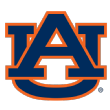In terms of wackiness, no college football season in my lifetime will probably ever compare to 2007.
The season started with Appalachian State beating Michigan at the Big House. It ended with LSU beating Ohio State for the national championship after the Tigers lost twice during the regular season, with both defeats coming in triple-overtime.
That wasn't the only thing crazy about 2007. Nick Saban, in his first season as Alabama head coach, lost to Louisiana Monroe, Illinois went to the Rose Bowl and the Nos. 1 and 2 teams in the AP poll fell on the same weekend three times, including each of the final two weeks of the regular season.
Despite that, this past Saturday flirted with the kind of wackiness that has never been seen in any season in college football history. We were a last-minute Alabama touchdown away from possibly seeing the three teams atop the AP poll all lose on the same day in the regular season. It shows that no one is unstoppable. Even Miami, which made a credible case for No. 1 after steamrolling No. 3 Notre Dame on Saturday, barely squeaked by Florida State and North Carolina earlier this season.
Could we be headed for another 2007-style finish? (That season, a four-win Pittsburgh team shocked No. 2 West Virginia 13-9 on the final day of the regular season. The Hurricanes end the regular season on Nov. 24 against the Panthers, who are currently 4-6. Just saying.)
No College Football Playoff contender looks unbeatable and none is without deficiencies. Here's a look at the fatal flaws that might bring down each of them, listed in the order I have them ranked after Week 11:
1. Miami: red zone offense

Mark Richt has done a remarkable job in his second season as coach of his alma mater, guiding Miami to a 9-0 record and a 14-game winning streak dating back to last season. Any doubts about the Hurricanes' legitimacy as a CFP contender were answered the past two weeks, when they beat then-No. 13 Virginia Tech 28-10 and No. 3 Notre Dame 41-8 at home.
The Hurricanes didn't have any problems crossing the goal line against the Fighting Irish, but their red zone offense has been an issue. Miami ranks 93rd in the FBS in red zone touchdown percentage (56 percent) and 120th in goal-to-go TD percentage (57 percent), just below winless Georgia Southern (60 percent), according to ESPN Stats & Info.
Miami's offense has done a great job of taking care of the ball, turning the ball over nine times in nine games. And the Hurricanes have feasted on takeaways to generate offense and field position. They scored 24 points off Notre Dame turnovers on Saturday and have forced four turnovers in four consecutive games.
But they'll need to be more consistent in the red zone down the stretch. Their last two regular-season opponents, Virginia and Pittsburgh, rank in the top 20 nationally in red zone defense. Clemson, which will be Miami's opponent in the ACC championship game on Dec. 2, has allowed opponents to score touchdowns on only 10 of 22 red zone attempts.
2. Alabama: mounting injuries

The Crimson Tide are undefeated and lead the FBS in average scoring margin (plus-28.7 points per game), but their mounting injuries on defense seem to be taking a toll.
Alabama lost star linebackers Ryan Anderson, Tim Williams and Reuben Foster from the 2016 team, and it's now without four of its top six linebackers from the preseason.
Shaun Dion Hamilton and Mack Wilson were lost to injuries in a 24-10 win over LSU on Nov. 4. Hamilton will miss the rest of the season with a fractured kneecap; Wilson is out four to six weeks with a foot injury. The Tide earlier lost Christian Miller (torn biceps) and Terrell Lewis (elbow) to season-ending injuries in a 24-7 win over Florida State in the opener.
Alabama really seems to be missing Hamilton, who made the defensive calls and was in charge of getting the front seven lined up correctly. Junior Keith Holcombe started at middle linebacker against Mississippi State, but freshman Dylan Moses replaced him in the second half of a 31-24 victory.
"We've probably had more guys injured, and we've had more games missed by starters this year than any time that I've been coaching, not just at Alabama," coach Nick Saban said. "It's difficult."
The Tide did something against the Bulldogs they have not been accustomed to doing much of this season: play from behind. They trailed MSU for 23 offensive snaps on Saturday, having trailed for a total of six this season entering the game. Their depth is being put to the test, which is easier to cope with when you've signed a dozen ESPN 300 linebackers in the past four recruiting classes. But how will they hold up against two of the SEC's top four rushing offenses in Auburn and (potentially) Georgia?
The Tide are also without starting left guard Ross Pierschbacher, who is expected to miss two to four weeks with a high-ankle sprain.
3. Clemson: field goal kicking

Clemson fans will be holding their breath if one of the Tigers' remaining games goes down to the wire. The Tigers have struggled to replace kicker Greg Huegel, a Lou Groza Award semifinalist last season who tore his ACL in his right knee in practice on Sept. 20.
Alex Spence, Huegel's replacement, has made only 5 of 10 field goal attempts and only one was longer than 29 yards. In fact, the Tigers are 0-for-5 on attempts longer than 30 yards since Huegel was lost for the season, the most such misses without a make by any FBS team during that span, according to ESPN Stats & Info.
Spence has made three of his past four attempts after going 1-for-3 on field goals in a 27-24 loss at Syracuse on Oct. 13. That performance caused Tigers coach Dabo Swinney to invite Drew Costa back to practice for a tryout. Costa tried to make the team as a walk-on the previous two seasons, but the Tigers didn't have a roster spot for him.
Huegel was very valuable in the 2015 College Football Playoff, making 5 of 7 field goal attempts with a long of 43 yards. He went 1-for-2 with a long of 45 yards in the Tigers' two CFP games last season.
Huegel's strong leg has also been missed on kickoffs. He recorded touchbacks on 53 percent of his kickoffs this season, while his replacements have done so only 23 percent of the time.
4. Oklahoma: defense

The Sooners lead the FBS in passing (388.8 yards per game) and total offense (600.7 yards) and average 44.3 points per game. On top of that, Oklahoma has quarterback Baker Mayfield, the leading Heisman Trophy contender, and the one player on a CFP contender's roster who seems capable of carrying his team on his back for two games.
But as good as Oklahoma's offense has been under first-year coach Lincoln Riley this season, its defensive performance would be unprecedented for a CFP participant. The Sooners are currently worse than all 12 previous CFP teams in five defensive categories when they entered the playoff.
OU's defense was criticized mightily after allowing 661 yards of offense in a 62-52 win over Oklahoma State in the Bedlam game two weeks ago, but it played better in a 38-20 victory over TCU this past weekend. Defensive coordinator Mike Stoops put three first-time starters -- cornerbacks Tre Brown and Tre Norwood and safety Robert Barnes -- in his secondary against the Horned Frogs.
"I think we answered a lot of those questions," Riley told reporters. "Like last week, this was two really, really good football teams. Two of the best teams in college football going at it."
5. Wisconsin: turnovers

The Badgers are unbeaten through 10 games, despite turning the ball over at an alarming rate. Wisconsin had a season-high four turnovers in this past weekend's 38-14 win over Iowa, including a pair of interceptions that were returned for touchdowns.
"You give them 14 points, and that's something we've been battling the whole year," Wisconsin coach Paul Chryst said. "We've got to do a better job of finding a way to help the players not do that. But it makes it hard, right? It makes it hard."
Wisconsin has turned the ball over 19 times (seven fumbles and 12 interceptions), which is second most in the Big Ten (Illinois has coughed it up 22 times). The Badgers have turned the ball over on 16 percent of their possessions this season, which ranks 123rd in the FBS and well below the FBS average of 11 percent.
The Badgers are going to have to take better care of the football down the stretch, starting with Saturday's game against Michigan.
6. Auburn: protecting the QB

Entering Saturday, the prospect of Auburn beating previously unbeaten Georgia, Alabama and then Georgia again in the SEC championship game to make the CFP seemed far-fetched.
But the Tigers dominated the No. 1 Bulldogs 40-17 on Saturday, and they'll play their last two regular-season games at home, against Louisiana Monroe this weekend and Alabama in the Nov. 25 Iron Bowl. If the Tigers beat the Tide, they'll win the SEC West and earn a rematch against Georgia in Atlanta on Dec. 2.
One of the reasons the Tigers beat Georgia is that they did a better job of protecting quarterback Jarrett Stidham, who was sacked only twice. The Tigers haven't done that very well this season; they're allowing sacks on 9 percent of their passing plays this season, which ranks 113th in the FBS and just below 1-10 San Jose State (8 percent), according to ESPN Stats & Info.
Stidham was sacked 14 times in the Tigers' two losses this season (11 times at Clemson and three at LSU), and he'll face another stiff pass rush against Alabama.
7. Georgia: one-dimensional offense

Was Georgia's offense exposed in an ugly loss at Auburn on Saturday, or was it just a really bad day at the office against a very hot team? Georgia coach Kirby Smart hopes it was the latter because his team's offensive line was manhandled by Auburn's stout defensive front.
Georgia gained only 46 yards on 32 rushing attempts (1.4 yards per carry) against the Tigers, after leading the SEC with 279.3 yards per game in the first nine contests. Until Saturday, the Bulldogs had survived while starting redshirt freshman guard Solomon Kindley and true freshman tackle Andrew Thomas on the right side.
"They were more physical than us on both sides of the line of scrimmage," Smart said. "Every SEC game that I have ever been a part of, if you lose the line of scrimmage on both sides of the ball, you don't have a great chance of a good outcome."
Given Georgia's production on the ground before Auburn, the Bulldogs hadn't asked true freshman quarterback Jake Fromm for too much. Entering this week, only 40 percent of Georgia's total yards have come via the pass, the 12th-lowest rate in the FBS, according to ESPN Stats & Info. That's not a good sign: No team has won a national championship with that little of its yardage coming on passes since Nebraska in 1997 (24 percent).
Auburn loaded the box to slow down Georgia's running game, and the Tigers forced the Bulldogs into several third-and-long situations. Georgia's offense didn't seem equipped to come from behind. Either Alabama or Auburn will probably use the same defensive plan in the SEC championship game.
8. Ohio State: giving up big plays

The Buckeyes were left for dead after an ugly 55-24 loss at Iowa two weeks ago, and they'll still need some help to climb back into the CFP race. But if Ohio State finishes the regular season with victories over Illinois on Saturday and at Michigan on Nov. 25 and then beats unbeaten Wisconsin in the Big Ten championship game, the Buckeyes will at least be in the committee's discussion.
For that to happen, Ohio State's defense will have to play more like it did in this past Saturday's 48-3 rout of No. 12 Michigan State. With two new starting linebackers, the Buckeyes largely eliminated the big plays that plagued them in earlier losses against Oklahoma and Iowa. The Buckeyes have allowed a whopping 43 plays of 20 yards or more in 10 games this season, which is 11th in the Big Ten and 52nd in the FBS (4.3 per game), according to ESPN Stats & Info. The Buckeyes allowed only 48 such plays in 13 games last season (3.7 per game).
OSU allowed seven plays of 20 yards or longer in a 31-16 loss to Oklahoma and nine in a 55-24 loss at Iowa.
